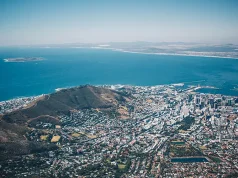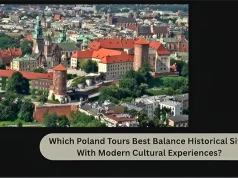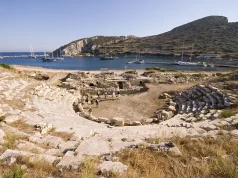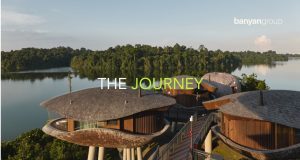At first glance, the idea of spending a holiday walking—often for hours a day, over days at a time—might seem more like a fitness challenge than a vacation. But across Europe and beyond, multi-day walking tours are quietly becoming one of the most popular ways to travel. The appeal isn’t just about nature or movement. It’s about pace, perspective, and presence.

Where traditional travel hops from city to city, cramming landmarks into tight itineraries, walking tours offer the opposite: time to notice what’s between the destinations—especially on quiet, well-established walking tours in Slovenia or other parts of central Europe. Rolling hills. Conversations with strangers. A slower unfolding of landscape and story. And as more travelers search for meaning and calm in how they explore the world, walking is no longer a niche—it’s a movement.
The Shift Toward Slower Travel
The growth of walking holidays fits neatly into a broader trend: people are increasingly looking for experiences that aren’t just seen, but felt. Whether it’s the aftershocks of the pandemic, a reaction to overtourism, or a deeper desire to unplug, travelers are rethinking what they want from their time away.
Multi-day walking tours respond to that shift. They don’t rely on spectacle. They rarely promise big, singular moments. What they offer instead is the satisfaction of steady progress and the quiet joy of arriving somewhere under your own power. It’s the kind of travel that builds memory slowly—less about highlight reels, more about texture.
Walking as Structure, Not Rigidity
What draws many travelers to walking tours is the way they offer a clear route without a fixed rhythm. The path is planned, but the pace is yours. Some days you move steadily; other days you stop often—at a quiet viewpoint, a village bakery, a lake you hadn’t expected to find. There’s no itinerary to follow hour by hour, just the satisfaction of knowing everything essential is in place.
That quiet structure is part of what makes self-guided walking so appealing. The logistics—overnights, luggage transfers, maps—are taken care of, but you’re never rushed or managed. It’s a format that thrives in places with well-kept trails and a landscape worth lingering in.
Slovenia is one of them. With its scale, clarity, and range—from high alpine passes to forest paths and wine hills—Slovenia walking holidays show how this type of travel can feel both effortless and deeply personal.
A Different Kind of Luxury
For many travelers, walking holidays aren’t just a way to get outside—they represent a different definition of luxury. Not five-star hotels or private transfers, but long days in fresh air, undistracted thought, and the feeling of earning your arrival.
There’s also the luxury of simplicity. A backpack with the essentials. A clearly marked trail. A small inn or mountain hut waiting at day’s end. In a world full of noise and decision fatigue, these things feel increasingly rare—and valuable.
Sustainability That’s Built In
As the travel industry contends with its environmental impact, walking holidays offer a refreshingly low-carbon alternative. Routes often pass through rural areas where tourism income supports local communities, without the disruption or overdevelopment that mass tourism can bring. Travelers move quietly, leave minimal trace, and interact more directly with people and place.

In some regions, the infrastructure has existed for decades, often maintained by national parks, hiking associations, or generational land stewards. Multi-day tours don’t require new development—they simply make use of systems already designed for thoughtful movement through natural spaces.
The Experience Travelers Didn’t Know They Needed
Ask someone after a week-long walking tour what they remember most, and it’s rarely a single peak or panoramic photo. It’s the rhythm. The way the landscape changed across the days. The clarity that came from being offline. The feeling of watching your progress take shape on a map not because you were hurrying—but because you kept going.
It’s this quality that makes walking tours stick with people. They offer the rarest travel souvenir: perspective that lingers.
The rise of the multi-day walking tour isn’t just about getting from point A to point B on foot. It’s about a return to something essential: travel that is slow, grounded, and quietly transformative.
As more travelers look for meaningful ways to engage with the places they visit, walking offers a simple answer—one that unfolds, quite literally, step by step.





